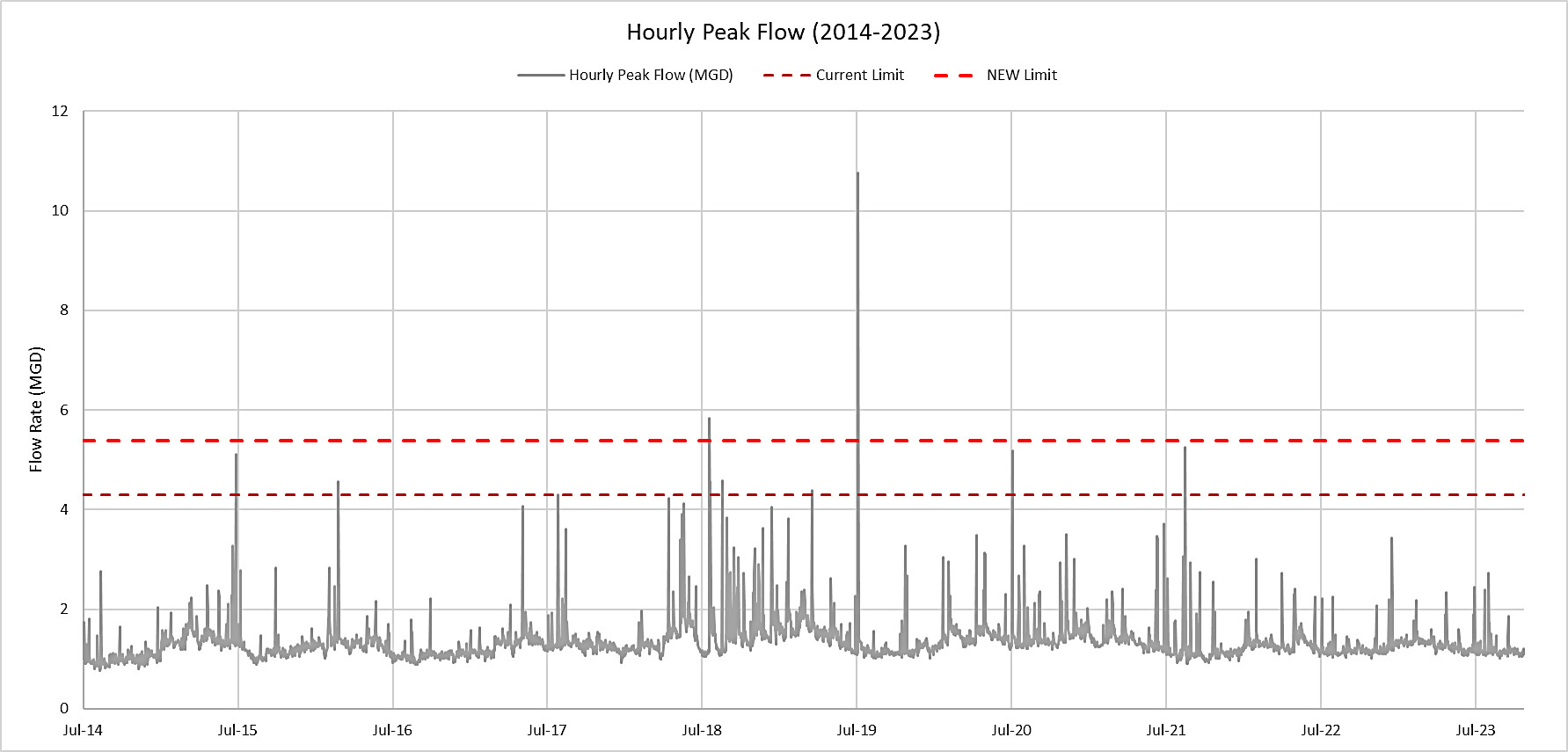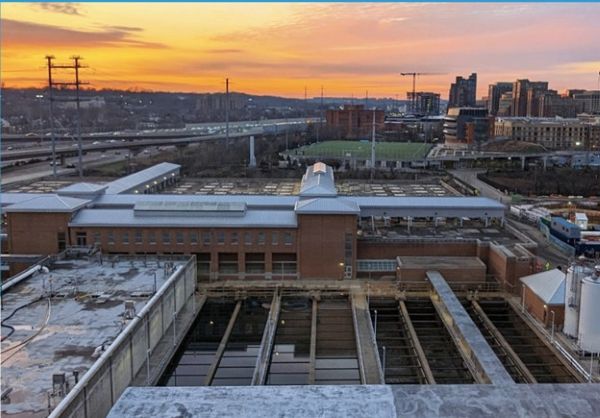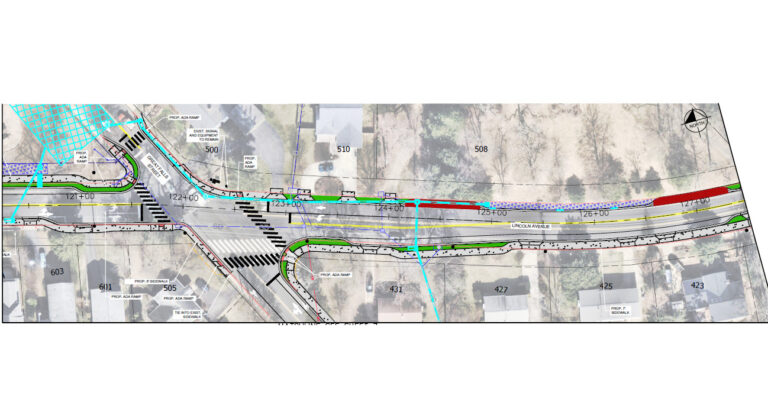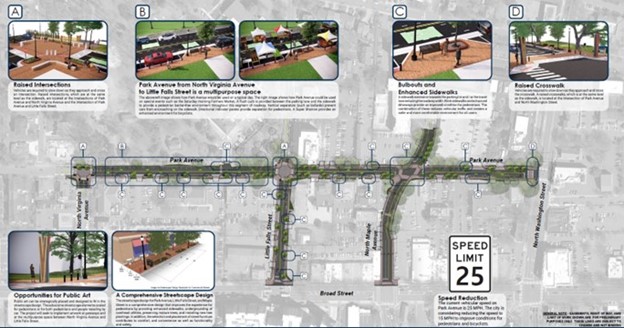Sewer Saga—A Deal with Fairfax and $45+ Million in Costs Over 6 Years
Above: Fairfax AlexRenew Plant where Falls Church City’s wastewater is treated (photograph from the organization’s 2024-2029 Strategic Plan)
Summary
Ten months have passed since the City Council last received an update on the City’s negotiations with Fairfax County on the purchase of additional sewage treatment capacity and a plan for handling peak flows. The Council was briefed on the status of a draft agreement between the City and Fairfax at its March 17, 2025, work session.
The draft agreement sets upper limits for the City’s annual average daily sewage flows, maximum total daily volume, and hourly peak flows with requirements to purchase more capacity, develop compliance plans, or stop new connections to the sewer system if these caps are exceeded within specified periods of time.
Since May 2024, the cost of increasing the City’s treatment capacity from 1.0 million gallons per day (MGD) to an annualized average daily total of 1.5 MGD has decreased from an estimated $9.3 million to $8.8 million, a reduction of $514,595. The lowered cost stems from treatment and conveyance capacity caps that the draft agreement with the County would place on the City.
However, the six-year cost of the City’s sewer infrastructure has increased from the $37 million anticipated in last year’s Capital Improvements Program (CIP) discussion to more than $45 million from Fiscal Year 2025 through FY2030. This latest price tag includes the $8.8 million capacity buy, $10.8 million for the construction of a flow equalization tank under Cavalier Park to mitigate peak flows, and another treatment capacity purchase of $5.53 million in FY2030. The staff’s update to the City Council indicates that the initial capital outlay for the purchase of the additional 0.5 MGD from Fairfax County as well as the construction of the flow equalization facility will be financed with a combination of cash and debt.
Fairfax County has yet to sign off on the draft agreement. The City Council will hold another work session on the agreement on April 7, 2025 and is scheduled to take final action on April 28. The City anticipates that Fairfax Board of County Supervisors will vote on the final agreement in June 2025.
Sanitary sewer capacity purchase
Deputy City Manager Andy Young and consultant Dustin Dvorak, an engineer with the Ramboll Group, provided the City Council with an update on negotiations with Fairfax County that have been underway for several years and with greater intensity since May 2023 when Fairfax first raised the issue of rainfall induced peak flows and required that, in exchange for additional sewage treatment capacity, the City would have to better manage these flows. [For background, see prior Pulse posts on the sewer issue – The Little City’s Big Sewage Challenge—Part 1, February 26, 2024; The Little City’s Big Sewage Challenge—Part 2: Has Growth Paid for Growth?, March 18,2024; and The Little City’s Big Sewage Challenge—Part 3: Will Debt (i.e., Taxpayers) Pay for Growth?, May 16, 2024 with June and August 2024 updates.]
Mr. Young noted that while the agreement has yet to be finalized, the City and the County have agreed to key terms. Those terms “provide needed capacity for the City as well as setting constraints on the peak flow that the County feels they need to protect their downstream infrastructure,” he said.
The terms establish three parameters that would be binding on Falls Church:
- an annual average daily flow of 1.5 million gallons per day (MGD),
- maximum total daily volume of 3.0 million gallons (MG), and
- hourly peak flows of 5.38 MGD.
Consequences to the City for exceeding these caps include the purchase of more capacity, the development of a “compliance plan,” and a halt to new connections to the sewer system. The City’s acceptance of these limits would permit its purchase of an additional 0.5 MGD for $8.8 million, bringing the City’s total treatment capacity with Fairfax to 1.5 MGD. The details are summarized in the following slide from the staff’s presentation to City Council.

In addition, the draft agreement would shift milestone dates given to the City by the County out one year for a more realistic timetable, manage any requirement to stop new connections to the sewer system by sewer sub-shed rather than throughout the City, clarify the definition of a “new connection,” and give the County the option to install a weir, or flow control device, to physically shut off City wastewater flow to its system if Falls Church fails to fulfill the terms of the agreement.
Flows to Fairfax
Mr. Dvorak described the portion of the City’s sewer system that feeds into Fairfax County, shown in shades of green in the slide below. (The tan area in the map shows flows to Arlington County.) The three sewer sub-sheds are Sislers, Tinners Hill, and Cedar Lane. The Sislers sub-shed generates 80% of the wastewater sent to Fairfax and includes the new development at West Falls and the Secondary Schools campus.

1. Average annual daily flow – The 0.5 MGD treatment capacity purchase
The first of the agreement parameters – the average annual flow – covers average flow over 12 months with all daily flows averaged at the end of each month. For the additional $8.8 million, the agreement would allow the City to increase its average annual flow from 1 MGD to 1.5 MGD beginning in 2025.
If flows are within 95% of Fairfax’s allocation of capacity to Falls Church, the City will either purchase more capacity or develop a plan to comply with the flow cap the agreement prescribes. If the annual average is exceeded for six consecutive months, the City will stop new connections.
The slide below shows the annual average flow from 2015 to 2023 (in gray), the trendline (in blue), and the current available treatment capacity at 1.0 MGD (lower dotted red line) and at 1.5 MGD (top dotted red line). Explained Mr. Young, “We are managing to the top line.”

Council Member David Snyder asked whether the City has these data back to 2000 or 2010. Mr. Dvorak said those data exist but are not sufficiently granular; he added that the numbers for those earlier years do show annual flows hovering between 0.8 and 1.0 MGD. The City has 2024 data but did not incorporate it in this presentation. Mr. Snyder sought clarification that “we’re talking about new development requiring the change from the lower red line (1.0 MGD) to the top red line (1.5 MGD), which is the $8.8 million [purchase],” and Mr. Young confirmed that understanding.
In describing the challenges faced by the City and the County in dealing with “old infrastructure,” Mr. Dvorak said, “The additional 0.5 MGD purchase is necessary to continue to develop and add new connections to the [City] system.” He added that “Fairfax is also looking at development along this corridor and wants to protect its customers downstream.” [Read the Pulse post Two Massive Fairfax County Developments Next to Meridian High School – Converge and WMATA West Falls, January 18, 2025.]
2. Allowed maximum total daily volume appears to be sufficient
The metric “maximum total daily volume” represents all the Falls Church wastewater going into the Fairfax AlexRenew Treatment Plant in a 24-hour period. This includes wet and dry weather flows and was set in discussions last year at 3.0 MG. The agreement would require that if this volume is exceeded twice in a 12-month period, the City would stop new connections.
Mr. Dvorak noted in the graph below that the City historically has not exceeded this volume limit from 2014 through 2023.

In response to a question from Council Member Erin Flynn about whether projected increased flows might pose a risk that the City would exceed this threshold, Mr. Dvorak said, “This is where the [flow] equalization tank comes in” because of the role of that facility to release wastewater to Fairfax in increments. He added that the need to stay below the 3.0 MG limit, along with climate change, will affect the sizing of the tank – a decision that the City expects to make this summer. The tank will likely be constructed under Cavalier Park.
3. Meeting the hourly peak flow maximum of 5.38 MGD
With this agreement, Fairfax requires that the City control excess flows, Mr. Dvorak said. The parameters in the draft agreement vary by sub-shed based on their average annual flows and maximum peak flows, as shown below. New connections would be stopped within a sub-shed if its flows exceed that sub-shed’s specific limits.

Council Member Justine Underhill asked whether the costs from hourly peak flows address issues stemming from a legacy system rather than new development. Mr. Dvorak said that the City’s older system and connections factor into the cost, but that is “not unique to the City. You are kind of at the mercy of what Fairfax’s system can handle right now.” He indicated that climate change, including more intense storms, must also be factored into any risk analysis.
Mayor Letty Hardi inquired whether everyone in the region has problems with peak flows, and Mr. Dvorak responded, “peak flows and flooding. How do we address this? How do we keep [excess] water out.” He added that “there are no silver bullets. Everybody’s trying to figure out what to do for their unique areas or their unique systems. I think the City’s in the same situation.”
Rationale for the tank
For City staff and consultant Dvorak, the flow equalization tank represents the best way to control peak flows, without which the City would likely not be able to purchase the required treatment capacity to support approved development. The following slide shows the City exceeding peak flows eight times in the last 10 years under its current agreement with Fairfax and also indicates that peak flows from storms in July 2018 and July 2019 would have exceeded the additional capacity the City seeks to buy.

Council Member Snyder challenged the rationale for the tank, suggesting that in response to Fairfax, the City is making a policy choice to continue development by building the retention facility. “Fairfax County has basically given us a choice: You may have [flow] exceedances in the future, in which case you can stop development, or we spend $10 million on this tank. So, in essence, we’re saying that the taxpayers are going to pay for the cost of this tank in order to allow for more development in the future.”
City Manager Shields countered that “we’ve known for a decade that we needed to buy additional capacity; it’s in our [Capital Improvements Plan]. When you have growth, you plan for it, and we have.”
Mr. Shields maintained that the extreme weather of July 2018 and July 2019 prompted Fairfax to inject into its discussions with the City the requirement to deal with severe peak flows. Mr. Young added, “I don’t know that Fairfax County would agree to the capacity purchase with us at all if we didn’t agree to do something to address the peak flow. So, I don’t think we have a choice to say we’re just going to take the [development] moratorium whenever it comes and just live with whatever happens.”
Costs to ratepayers
Mr. Shields acknowledged that the cost to build the flow equalization tank “is significant for our ratepayers” and “outside what developers have paid for,” adding that “what we would be committing to with this purchase agreement is to work to shave [peak flows].” Further, he said the City hasn’t done preliminary engineering on the tank and its size has yet to be determined, leaving its final cost uncertain.
With the capacity purchase included in FY2025, projected costs have increased from $37 million in May 2024 to more than $45 million today through FY2030, as shown in the City’s presentation slide below.

Mr. Shields said at the March 17 City Council work session that the cost of the treatment capacity purchase from Fairfax as well as expanded pipes at the West Falls development “equal out roughly with the availability fees we have been charging.” Last year, the City increased both its sewer availability or connection fees paid by developers and its sanitary sewer commodity or usage fees paid by City residents and businesses, tying the latter to the Consumer Price Index. At the time, Mr. Shields acknowledged that the City’s availability rates were 10% less than they needed to be to support the required sewer infrastructure.
Addressing I&I and creating a sewer master plan
In recent months, the City has stepped up its pace in addressing I&I – inflow (water other than sanitary flow that enters a sewer system) and infiltration (groundwater that infiltrates a sewer system through defective pipes, pipe joints, connections, or manholes), Mr. Young said. Forty manholes have been protected and reinforced rather than being replaced to prevent I&I in the Cedar Lane sub-shed. Though two-thirds of the Cedar Lane customers are in Fairfax County, the City is responsible for the infrastructure. “They are our manholes,” Mr. Young said.
In addition, to date the City has rehabilitated more than 31 miles (64%) of its 49-mile sewer system by lining pipes. Between FY2022 and FY2024, 11,000 linear feet were lined at a cost of $700,000. The City is budgeting $4.5 million, or $750,000 each year from FY2026 to FY2031 to continue this effort, according to Mr. Young. He said the City is “tackling the public side of I&I first because we have control over that.” When asked by members of Council about the amount of public versus private I&I, Mr. Dvorak noted that “the I&I flow issue tends to be more on the public than the private side.”
Mr. Dvorak also said that I&I remediation might help the City reduce peak flows by 20-30%, but that the City requires a 50% reduction. “You can’t get there in the timeframe Fairfax requires,” he noted, reinforcing the recommendation that the City correctly size and build the flow equalization tank. Further, “the tank provides a lot of flexibility in the future, beyond solving the problem today,” Mr. Dvorak said.
Future planning
Looking ahead, City staff will work with County partners to create and maintain a sanitary sewer master plan, work to reduce private property I&I, and evaluate future capacity purchases, either from Fairfax or Arlington County.
Mr. Young noted that construction of the Quinn development’s force main to pump its sewage to Arlington will provide additional options for development in that part of the City. Arlington agreed last August to accept wastewater from “the center of Falls Church,” including the planned 10-story Quinn mixed-use development. However, he acknowledged that “topography is an issue. For us to leverage Arlington County’s capacity, we have to pump [the wastewater],” he said.
Council Member Flynn asked about the City’s liability if connections have to be stopped for development projects that have already been approved. City Attorney Sally Gillette said she wants to speak with Fairfax County’s attorneys about the legality of a moratorium on by-right development.
Mr. Young said the City staff hopes to come back to the City Council at its April 7 work session with more information on the agreement with Fairfax and on April 28 for the Council’s final approval. The City’s goal is to have the Fairfax County Board of Supervisors approve the agreement by the end of June and before the July 1 start to FY2026.
References
- City Council work session, March 18, 2025 from timestamp 1:44:38 to 3:15:00. This video will not display properly on a small screen as it includes the agenda.
- City Council work session, March 18, 2025. YouTube video.
- Sanitary Sewer Agreement Staff Report, March 18, 2025.
- DRAFT Capacity Purchase Agreement, March 18, 2025.
- Attachment B-1_ City of Falls Church and Fairfax County Disposal Areas.
- Attachment B-2_City of Falls Church Peak Flow Allocation at City Points of Delivery.
- Sewer Agreement Council Presentation Final.







